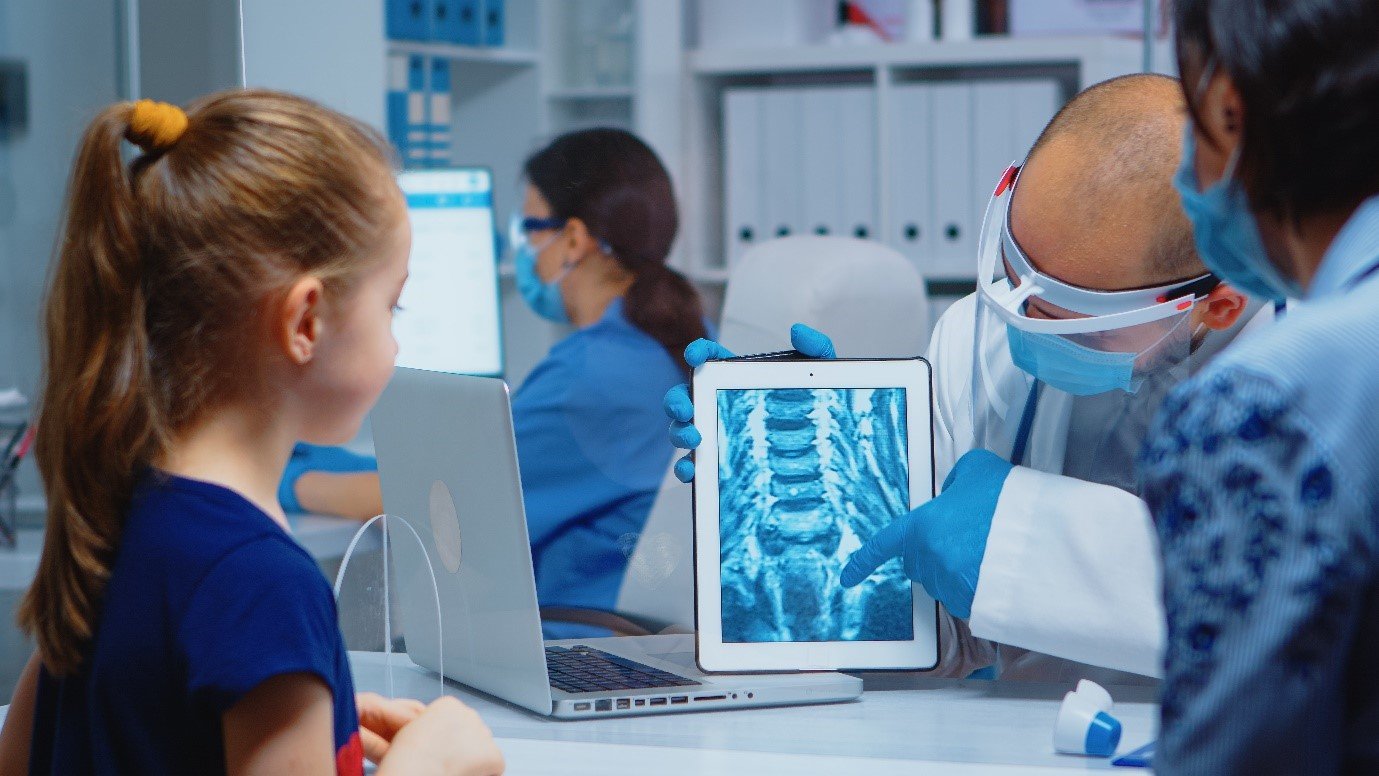X-rays, those unseen and mysterious rays that have significantly transformed the field of medical diagnosis, remain a complex subject for many. Although they are widely used, very few understand how these invisible rays work and why they are so crucial. In this article, we will demystify the subject of X-Ray technology, dissecting its history, functionality, types, and uses. Thus, preparing you to understand X-ray reports and discussions that your radiologist may share during your next medical consultation.
X-rays are electromagnetic waves like visible light, but far more energetic. Their power to penetrate the human body makes them indispensable for diagnosing and treating a range of medical conditions. From identifying fractures and examining the lungs to detecting deadly cancers, the utility of X-rays in modern medicine is far-reaching. However, the potential risks from exposure to these powerful rays are also significant.
Our objective with this discussion is to delve beneath the usually daunting technical jargon associated with X-rays. We aim to provide a comprehensive understanding of X-ray techniques, their evolution, different types, applications, and the way they are interpreted. This article does not substitute a formal education, but we hope it will be a reliable guide to your understanding of the concept of X-rays and their relevance in modern society.
Deconstructing the X-Ray: What it is and How it Works
X-rays are a form of high-energy electromagnetic radiation, similar to light but possessing much higher energy. They have the capacity to penetrate multiple materials, including human tissue. When X-rays pass through the body, they are absorbed in varying degrees by different tissues. Dense tissues like bone absorb more X-rays, making them appear white on the developed X-ray film.
The production of X-rays involves a complex process within an X-ray machine. Essentially, a cathode emits a stream of electrons, which collide with the anode (typically made of metal like tungsten), producing X-rays. When this beam of X-rays passes through the human body, an image is formed based on different densities of the tissues inside.
Safety concerns are an essential part of utilizing X-ray techniques. While they provide essential diagnostic information, X-rays are a type of ionizing radiation, and can damage living tissue with high exposures. Consequently, strict guidelines and protections are in place during X-ray procedures, including the use of lead aprons and limiting unnecessary exposures to patients.
Exploring the Different Types of X-Ray Techniques
Variety is an integral aspect of X-ray techniques. Each technique has been developed to offer solutions to specific diagnostic needs. Projection Radiography forms the basis of conventional X-Ray imaging. As the most familiar type of X-ray, it offers a two-dimensional view of the body part of interest.
Fluoroscopy offers real-time moving images of the internal structures of the body. It is frequently used in cardiac, digestive, and urinary system procedures and investigations.
Computed Tomography is an advanced form of X-ray technology that uses multiple X-ray measurements taken from different angles to create cross-sectional images of specific areas of the body.
The Digital Radiography technology captures and manipulates the image digitally, offering greater convenience and efficiency in X-ray imaging.
A specialized form of X-ray imaging, Mammography, is specifically employed in breast tissue screening to detect early stages of breast cancer.
Practical Applications of X-Ray Techniques
The applications of X-ray techniques go well beyond the medical field. These electromagnetic waves are mainstay diagnostic tools, aiding in detecting various ailments like fractures, lung diseases, heart conditions, and cancers.
In addition to medical uses, X-ray techniques have industrial and research applications. They play a significant role in non-destructive testing in engineering for detecting defects, and in art and archaeology for exploring hidden layers of paintings and excavations.

However, X-ray techniques are not devoid of controversy. Concerns over radiation exposure and related long-term risks, questionable necessity of certain diagnostic procedures, and uneven access to X-ray technologies across the world, form a part of the ongoing dialogue around X-rays.
Making Sense of the X-Ray: How to Interpret Results
Interpreting an X-ray is often seen as a daunting task, left to the skilled eyes of a radiologist – the medical specialists trained in X-ray image interpretation. The art and science of reading an X-ray involve recognizing different patterns formed from how different body tissues absorb X-rays.
Various factors influence the interpretation of X-ray results, including the angle and intensity of the X-ray beam, patient positioning, and even the experience of the radiologist. While it would be impractical to impart detailed understanding in this article, it is essential to know that darker areas on an X-ray image typically represent less dense tissues like skin and muscle, while lighter (whiter) areas denote denser tissues like bones.
The Future of X-Ray Techniques
Current research and advancements in X-ray technology continue at a rapid pace, focusing both on enhancing the capabilities of X-rays and minimizing their potential risks. Novel techniques like phase-contrast X-Rays and spectral (colour) X-Rays point toward the next big innovations in X-Ray applications.
Simultaneously, the digital revolution is transforming how radiologists interpret and report X-ray findings, with machine learning algorithms playing an exciting role. From auto-detection of certain patterns to sifting through large volumes of imaging data, artificial intelligence is likely to play an increasingly important role in the world of X-ray techniques.
Conclusion
Throughout this article, we have explored the fascinating landscape of X-Ray technology, meandering from its humble beginnings to its magnificent present-day state. Understanding X-ray techniques holds significant importance as they are crucial tools in healthcare and various other industries. While the myriad complexities of interpreting X-rays may deter many, a basic understanding can be empowering, offering insights into what occurs when doctors ask us to stand still while they take a ‘quick picture’.



